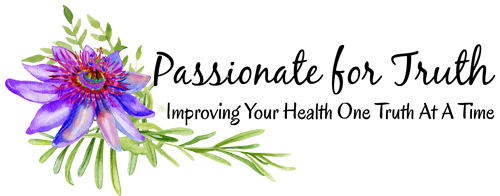Since natural progesterone has none of the harmful side effects of other hormones (except for possible alteration of the menstrual cycle if it is taken at the wrong time of month), the basic procedure should be to use it in sufficient quantity to make the symptoms disappear, and to time its use so that menstrual cycles are not disrupted. This normally means using [progesterone supplementation] only between ovulation and menstruation unless symptoms are sufficiently serious that a missed period is not important. The basic idea of giving enough to stop the symptoms can be refined by some information on a few of the factors that condition the need for progesterone.
Progesterone is commonly known as the pro-gestational hormone and classified as a sex hormone. Pro-gestational means that it is necessary for pregnancy and referring to it only as a sex hormone misses all of the other beneficial uses of this amazing hormone, such as for seizure control and for the reduction of brain inflammation with traumatic brain injury patients.
Progesterone is actually the most protective hormone produced by the body, as is demonstrated in its protection of a fetus throughout gestation. The most important organ, the brain, actually contains very high amounts of progesterone, and the main organ controlling our immune system, the thymus gland, requires progesterone to do its job as well.
Progesterone can be used symptomatically not only for typical female problems such as PMS and peri-menopause, but also in topical treatment for sun damaged skin, acne, wrinkles, and pain conditions such as arthritis, bursitis and tendonitis. Studies have shown that taking natural progesterone at the onset of migraines can be beneficial as well. Natural Progesterone Cream can be used topically by being directly applied to any affected area.
Since an essential mechanism of progesterone’s action involves its opposition to estrogen, smaller amounts are effective when estrogen production is low, thus the typical recommendation of low doses of progesterone (10-25 mg). This, however, is only effective if estrogen production is low. Progesterone is the most effective for any person when diet is optimal containing more than enough high quality, organic protein and excessive amounts of unsaturated fats and other estrogenic foods are removed.
If estrogen is extremely high, even large supplements of progesterone may have no clear effect until other corrections contributing to estrogen dominance are addressed. It is essential to regulate estrogen metabolism by improving the diet, correcting any thyroid deficiency, removing toxins and excess estrogens (xenoestrogens, phytoestrogens) in the home, health care products, medicines, foods, pesticides, etc. (Unsaturated fat is anti-thyroid and combines with estrogen to increase the estrogen load.)
Some advise using 10-40 mg. of natural progesterone per day, but many times that is not sufficient and usually just makes matters worse. Small amounts are like a ‘tease’ to the estrogen receptors. Studies show that higher amounts yield the best response, whereas lower amounts simply aggravate the estrogen receptors, which sadly makes people think that the progesterone isn’t working. It is important to use high enough amounts so that it can work effectively with your body, not against it.
The recommendations of using a minimum dose of 100 – 200 mg./day is for the purpose of avoiding the problems of estrogen dominance and the symptoms caused by that. That is the reason that many times more is needed in the beginning. The higher the progesterone, the more it ‘squashes’ the estrogen and keeps the proper progesterone to estrogen ratios to avoid the problems of estrogen dominance. If an increase from the lower recommended amounts is required, once the symptoms have cleared, reducing the amount slowly until getting back down to no less that 100 mg./day seems to have the best benefit, according to experts. It should be used a minimum of twice a day as levels begin dropping after about 13 hours. But in severe cases, application can be hourly.
TYPICAL HORMONAL REASONS FOR USING NATURAL PROGESTERONE:
- PMS – The ovaries produce the largest amount of progesterone during the second half of the menstrual cycle (typically days 14-28 in normal cycles), typically 30 mg. per day. This would be taking place beginning with ovulation and dropping at the beginning of menstruation. The body still produces small amounts of progesterone naturally during the first two weeks, beginning with bleeding until just before menstruation, but the stark increase is seen at ovulation. Most women who are trying to alleviate mild symptoms of PMS will be advised to take 10-25 mg. of natural progesterone just for the purpose of bringing their possibly sagging progesterone levels up to a normal range that will alleviate their symptoms. Normally, cycling natural progesterone during the month would have women to stop taking it on day 1 of their menstrual cycle (signified by the beginning of bleeding) until day 13, resuming natural progesterone cycling on day 14 at ovulation
- PERI-MENOPAUSE – When progesterone production naturally begins to decrease with age, body changes and symptoms signal the pending stage of life known as menopause. This is a very critical point where estrogen production may be at the highest point in a woman’s life. Peri-menopause is typically a point in life where many women begin to use higher doses of natural progesterone on a daily basis to alleviate the symptoms of the drastic changes in hormones (reminiscent of the hormonal changes of puberty on the younger end of life’s spectrum). During peri-menopause, cycling the progesterone, or using lower doses as is done for less severe symptoms, is usually not effective and may actually exacerbate the estrogen receptors due to the high amount of estrogen being produced at this time in life causing symptoms to get worse. Peri-menopausal symptoms such as anxiety, heavy bleeding, lack of sleep and more can many times be addressed by supplementing with no less than 100 mg. per day of natural progesterone, sometimes higher as needed for extreme, severe symptoms.
- MENOPAUSE/POST MENOPAUSE – Although it isn’t always necessary to keep using natural progesterone supplementation indefinitely for some, progesterone is still required after menopause, and supplementation for proper levels of progesterone may still be necessary. Even if the ovaries have been removed, the adrenal glands and brain continue to produce progesterone. Because of the fact that the pituitary gland, adrenal glands and the brain still require progesterone long after menstruation has ceased, many women still continue to use natural progesterone cyclically. By doing so, progesterone protects against problems that can stem from the lack of progesterone production such as adrenal gland protection, unopposed cortisol production, and the pituitary gland’s participation in osteoporosis, hypertension, and arthritis. As progesterone possesses anti-stress effects, many women will continue to use as little as 10 mg. of natural progesterone without cyclical interruptions for that purpose alone.
http://raypeat.com/articles/articles/progesterone-summaries.shtml
http://www.progesterone-info.com/first-time-users.html#sthash.JK58JuT3.dpuf


